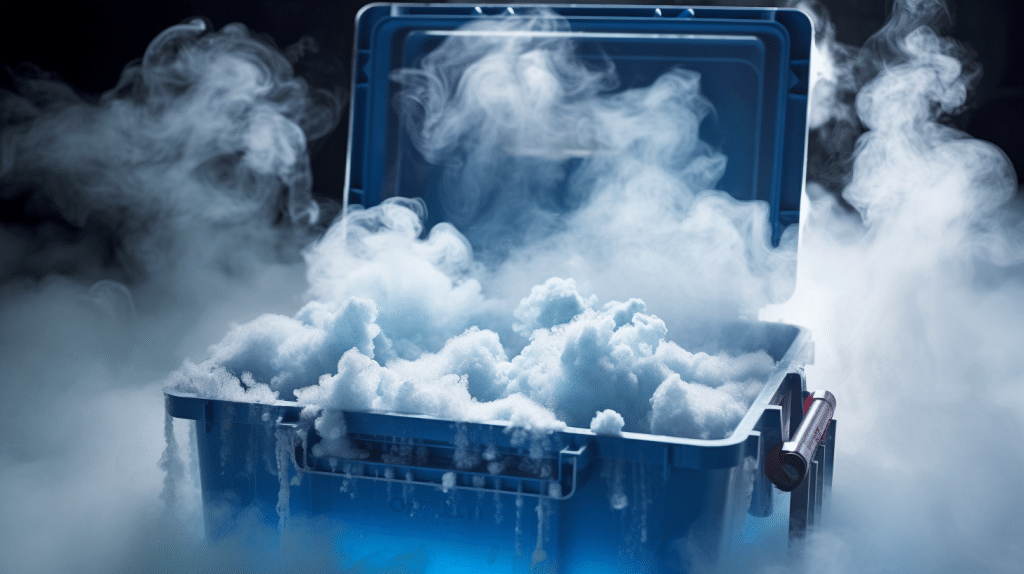The Chilling Truth: How Long Dry Ice Lasts in a Cooler
Dry ice, the solid form of carbon dioxide (CO2), offers a powerful cooling solution. Unlike regular ice, which melts and creates water, dry ice sublimates – it transforms directly from a solid to a gas. This unique property makes it ideal for situations requiring prolonged cooling, particularly when maintaining frozen items during transport or storage. However, understanding how long dry ice lasts in a cooler is crucial for optimal use. This guide explores factors influencing dry ice longevity in a cooler, safety precautions, and alternative cooling methods (word count: approximately 1480).
Unveiling the Dry Ice Disappearance: Factors Affecting Lifespan in a Cooler
The lifespan of dry ice in a cooler hinges on several key factors:
- Initial Quantity of Dry Ice: The more dry ice you use, the longer it will last. A larger quantity provides a greater cooling reserve through sublimation.
- Cooler Quality and Insulation: A high-quality cooler with thick insulation significantly slows down the sublimation process, extending dry ice longevity. Budget coolers with minimal insulation will see dry ice sublimate much faster.
- Cooler Size: A smaller cooler creates a more confined space, minimizing air circulation and slowing down sublimation. In contrast, a larger cooler allows for more air circulation, potentially accelerating sublimation.
- Ambient Temperature: The hotter the surrounding environment, the faster dry ice will sublimate. Storing your cooler in a cool location optimizes dry ice lifespan.
- Frequency of Cooler Openings: Opening the cooler frequently allows warm air to enter, accelerating sublimation. Minimize cooler openings to maintain a colder internal environment and extend dry ice life.
Understanding Sublimation Rates: A Glimpse into Dry Ice Lifespan
While an exact prediction is difficult, here’s a general estimate of dry ice lifespan in coolers based on factors mentioned above:
- High-Quality Cooler, Ideal Conditions: In a well-insulated cooler with a sufficient amount of dry ice and minimal temperature fluctuations, dry ice can last up to 24 hours or even longer.
- Standard Cooler, Moderate Conditions: In an average cooler with moderate insulation and dry ice quantity, expect a lifespan of around 12-18 hours.
- Budget Cooler, Warm Conditions: A poorly insulated cooler in a hot environment will likely see dry ice sublimate within a few hours (3-5 hours).
Important Note: These are estimations, and real-world results may vary. It’s always best to factor in a safety margin and use more dry ice than you might initially think you need.
Safety First: Essential Precautions When Using Dry Ice in a Cooler
Dry ice safety is paramount. Here are key precautions to remember:
- Never Touch Dry Ice with Bare Hands: Dry ice is extremely cold (-78°C or -109°F) and can cause severe frostbite on contact. Always wear gloves when handling dry ice.
- Proper Ventilation is Crucial: Dry ice releases CO2 gas as it sublimates. Confined spaces with poor ventilation can lead to dangerous CO2 buildup. Never use dry ice in a sealed, airtight container or a poorly ventilated room.
- Keep Out of Reach of Children and Pets: Dry ice poses a choking hazard and can cause frostbite if ingested. Store dry ice in a secure location away from children and pets.
- Label Your Cooler Clearly: Clearly mark your cooler as containing dry ice to avoid accidental ingestion or mishandling.
Beyond Dry Ice: Alternative Cooling Methods for Your Cooler
While dry ice offers exceptional cooling power, it isn’t always the most practical option. Here are some alternative cooling methods for your cooler:
- Regular Ice: The classic and readily available option. While not as long-lasting as dry ice, regular ice is a suitable choice for shorter trips or situations where dry ice isn’t readily available.
- Ice Packs: Pre-frozen ice packs offer a convenient and reusable option for shorter cooling needs.
- Frozen Water Bottles: Filling empty water bottles with water and freezing them can provide additional cooling power alongside regular ice.
Choosing the Right Cooling Method: Matching Needs with Options
The optimal cooling method depends on your specific needs. Consider these factors when making your choice:
- Duration of Cooling Required: For extended periods, dry ice reigns supreme. For shorter trips, regular ice or ice packs might suffice.
- Availability and Cost: Dry ice can be more expensive and less readily available than regular ice or ice packs.
- Safety Considerations: If proper ventilation is a concern, regular ice might be a safer option.






More Stories
Where to Watch USMNT vs Jamaica National Football Team
How I Met My Monster
How Should a Ring Fit